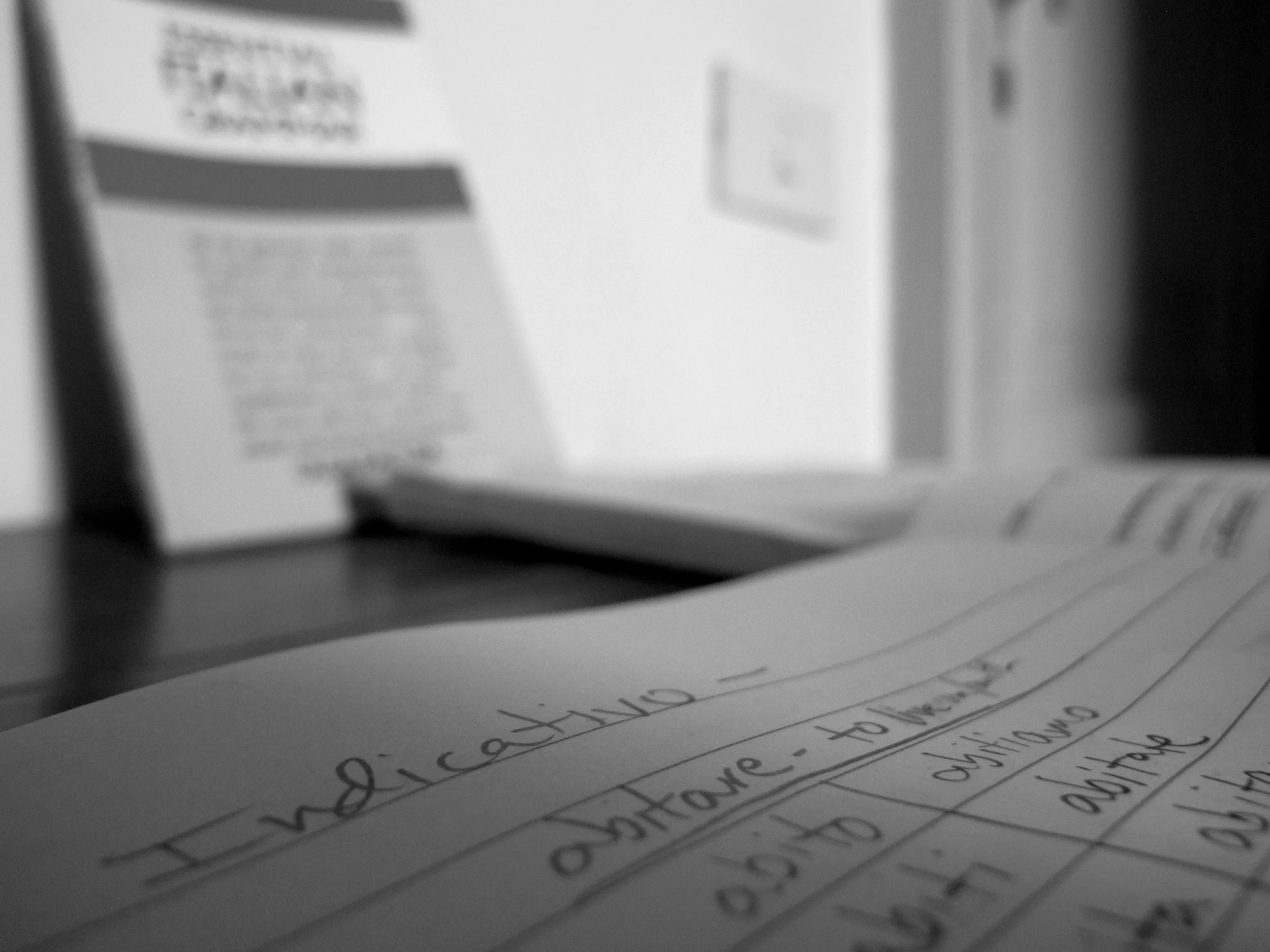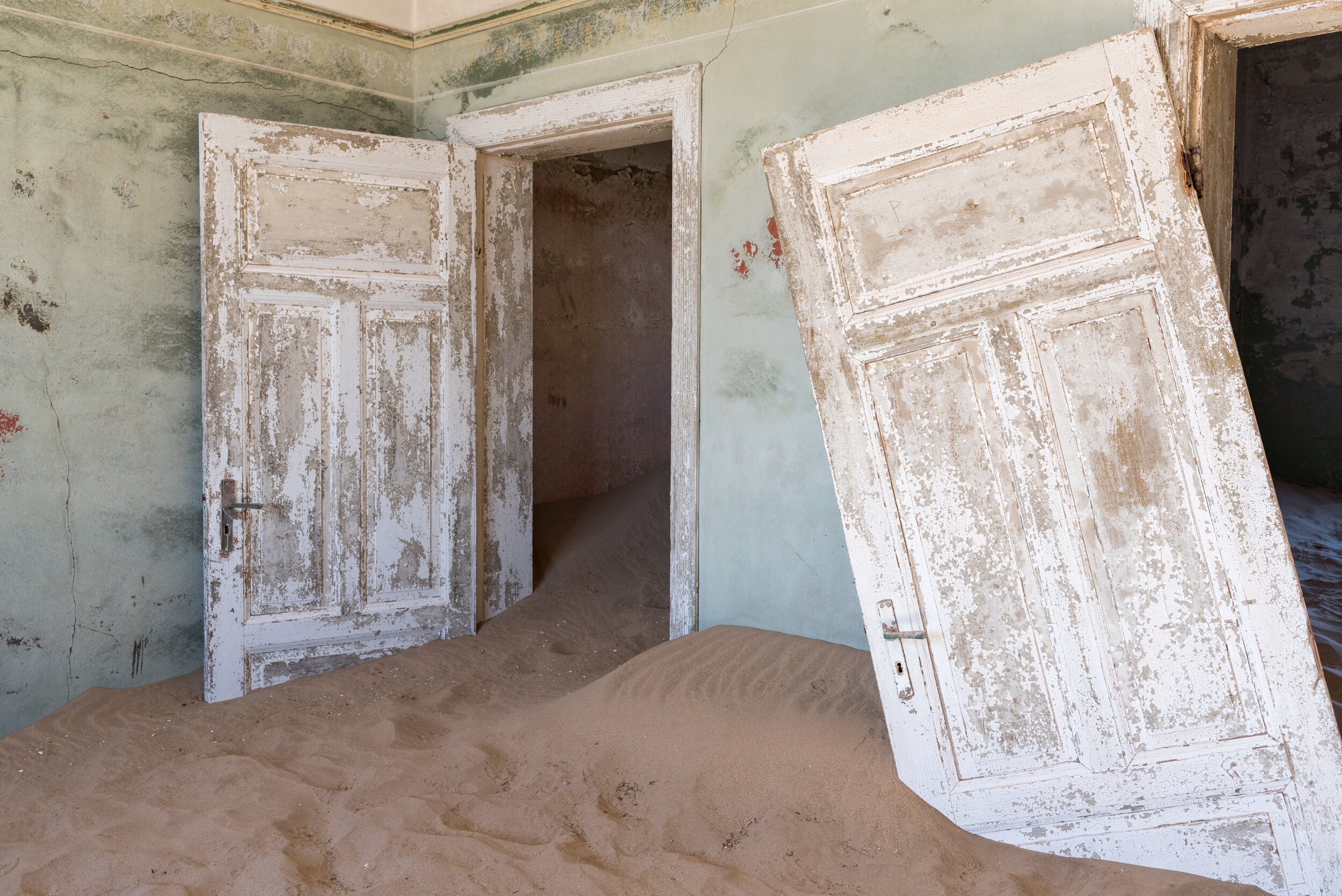Crimson sand dunes dominate the horizon in all directions as a slight breeze swirls a trail of wispy haze from the blurry peaks. Like enormous serpents, the spine of each towering dune is perfectly pronounced as it divides the light from the dark, the sun from the shade, the searing heat from the relieving cool. Hidden within the dunes, an oasis gone wrong awaits, with waters turned to dry, white pans, and lush forests turned to frozen skeletons of trees long passed. There is no life, save two souls lost in the desert.
Making our way inland from the Skeleton Coast, yellow sands turned to red as we arrived into the Sossusvlei region of southern Namibia. If you’ve heard or seen anything about Namibia, it’s most probably Sossusvlei, and even if you haven’t, the odds are that your Windows screensaver has, on some occasion, displayed the mesmerizing red dunes to distract you from your work. Arriving in the late afternoon, we decided to journey into the park while most others were doing their best to stay out of the sweltering desert heat. After days of dirt roads, the paved road of the park had us feeling like we were floating on air, making the speed limit impossible to keep. Driving deeper into the park, the dunes began to engulf more and more. Upon reaching the end of the pavement, a quick 4WD jaunt through the sand left us at the base of a dune, walking along a hard, white pan, flat as a…cake. While the surrounds were beautiful, it felt as though we were missing something, that what we were searching for was hidden away behind another dune.
Backtracking a bit, we parked our car and looked for some signage pointing us toward our prize. Nothing. The one other couple we saw with us seemed to give up, as they drove off into the distance, leaving us alone in the desert, surrounded by imposing sand seemingly sculpted to look as ominous as possible. So, we chose a direction and started walking. With each small dune cresting, we hoped to find relief below, but were denied over and over. We stumbled upon some signage 95% buried in sand, which we couldn’t decide whether that was a good thing or bad, but we carried on. At long last, as we were dwarfed by the biggest dune in sight (“Big Daddy Dune” if you were wondering its name), we crested once more, revealing Deadvlei, an altogether alien universe.
Walking, alone, onto the vast, gleaming white pan at the foot of a 1,000ft, deep orange dune, under a blindingly blue sky, had me wondering when the dream would end, or whether it was actually a nightmare in which I wouldn’t be able to escape. The empty plain is interrupted only by a few dozen seemingly petrified trees, standing tall and preserved, leafless and colorless, as though they were turned to stone during their attempts to reach their limbs into the heavens. If Gokyo Lake in Nepal was Heaven, and Mt. Nyiragongo in the Congo was Hell, there is no more apt comparison for Deadvlei than Purgatory. A hauntingly beautiful place where life ceases to exist, where the heat makes you sweat out any toxins, and where you cannot help but stand in absolute awe of what lies in front of you. I found myself wondering how something so devoid of life could be so beautiful at the same time.
After our moment of dumbfoundedness, the urge to explore returned, as we made our way across the vlei and began the climb up Big Daddy. Conveniently, I forgot the extra water in the car, leaving us in rationing mode as we climbed the scorching sands in two-steps-up, one-slide-down fashion. The view from the top, again all to ourselves, was nothing short of spectacular, dunes as far as the eye could see, the frozen trees in the distance below, the giant, white lake of yester-millenia at our feet. After rationing out a few sips of water, we glided and tumbled down the searing sands of the dune, free as free can be, the afternoon sun no match for our elation. Deadvlei soon became our own private dancefloor, with the disco-ball sun casting the shadows of our frozen-in-time dance partner trees across our rhythmless figures. My lens may have snapped a thousand times, but the mental pictures pushed the limits of my brain’s storage capacity. Leaving the planet behind, I looked back at least a dozen times, wondering if it would all still be there, if I’d really experienced what my mind was recalling. As Deadvlei disappeared behind the last dune, I was resigned to a memory in limbo, which seems about right for the purgatory paradise.
We continued pushing through Namibia’s frontiers, our last excursion taking us around Fish River Canyon, which would have been nothing less than spectacular had we not just spent two weeks in the outdoor wonderland of Namibia and the year prior at the Grand Canyon.
I think they call that the (Travel) Theory of Relativity…































































